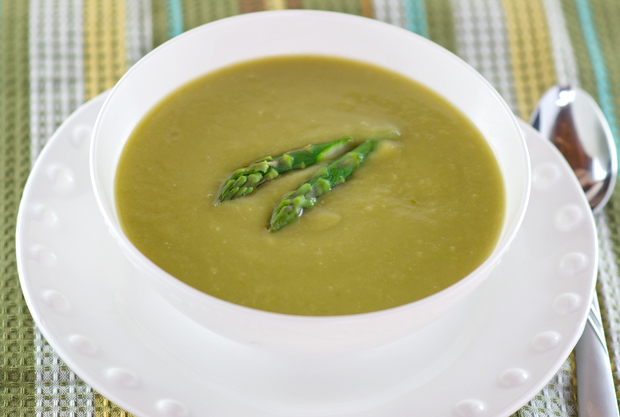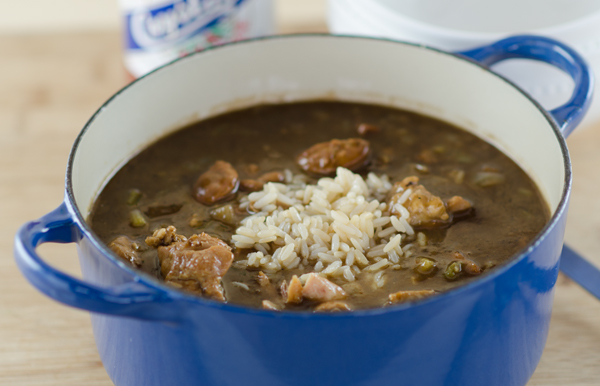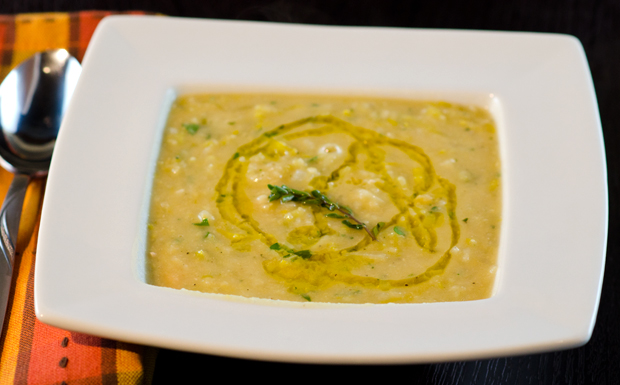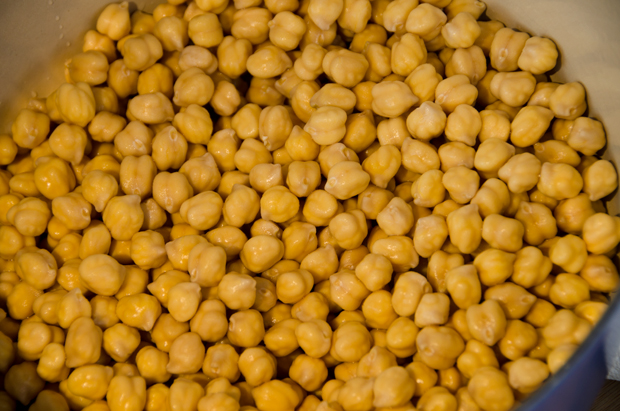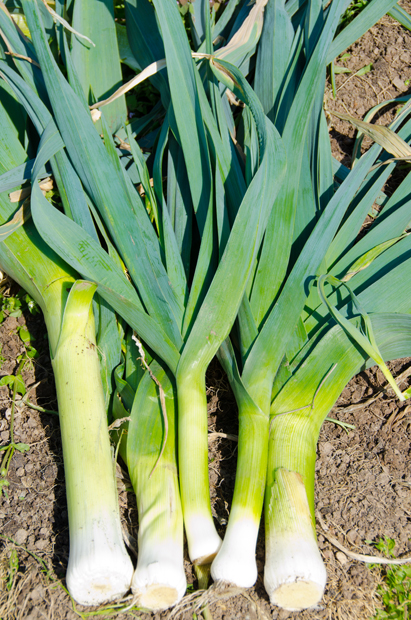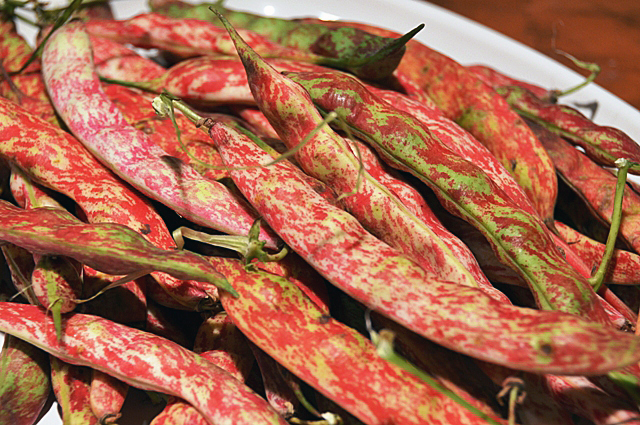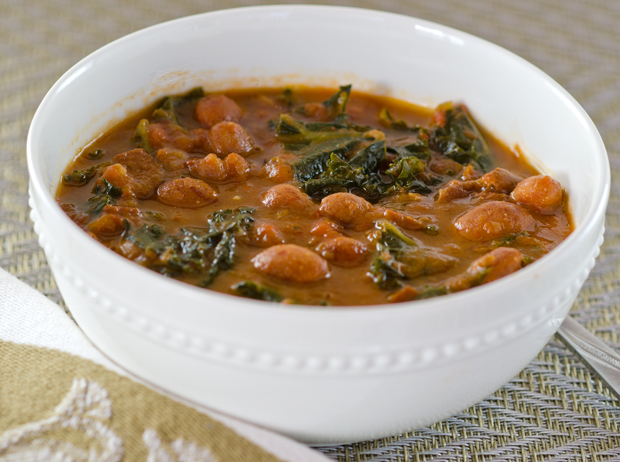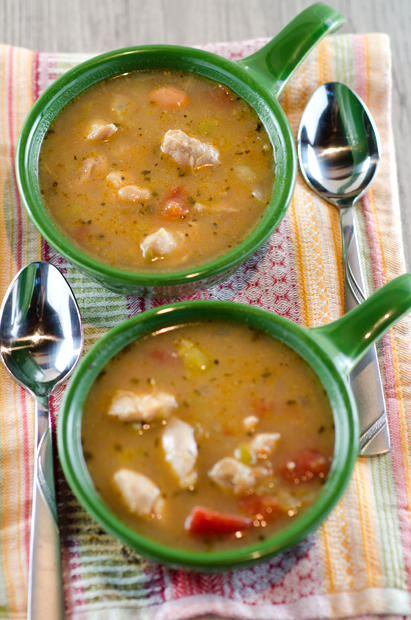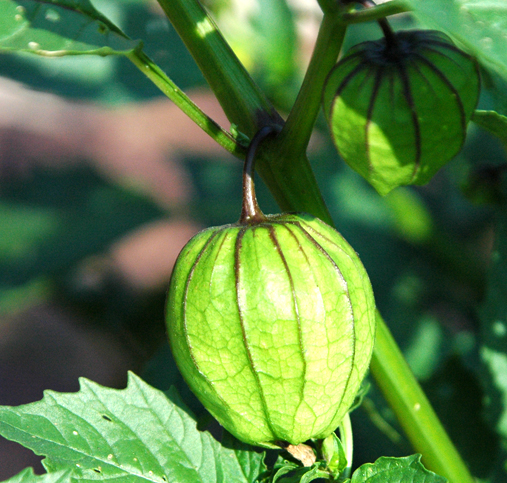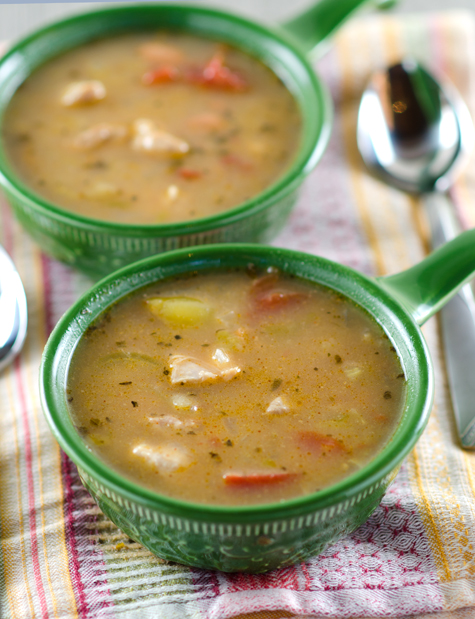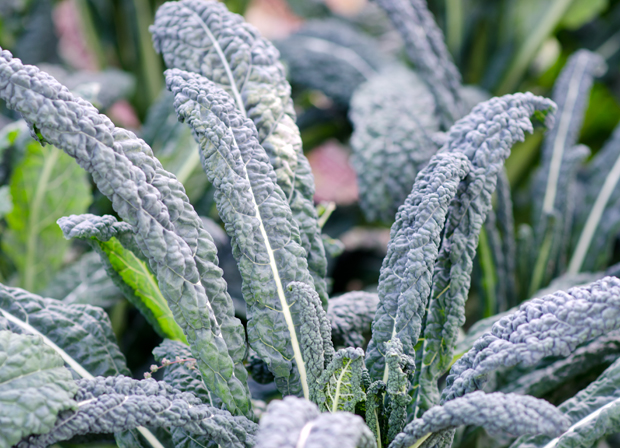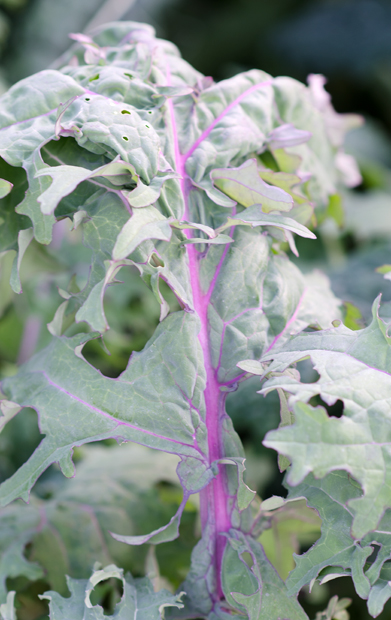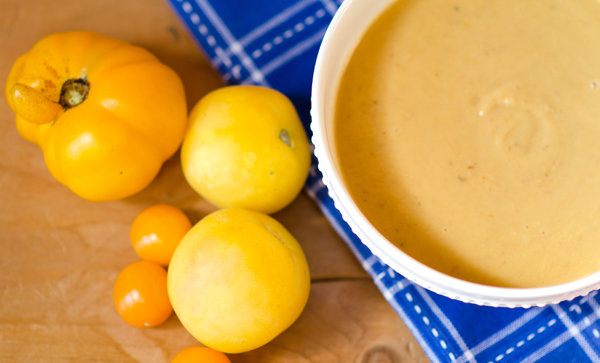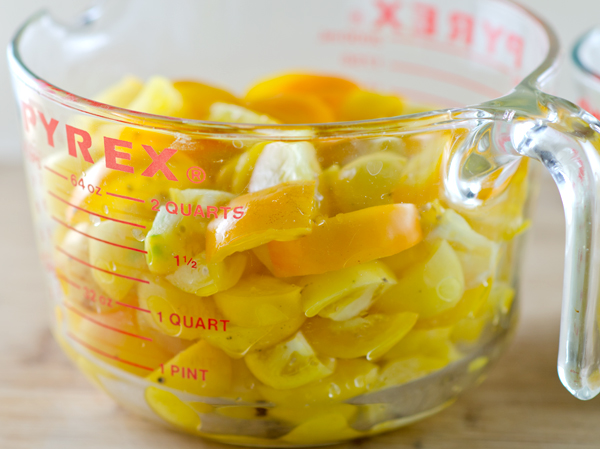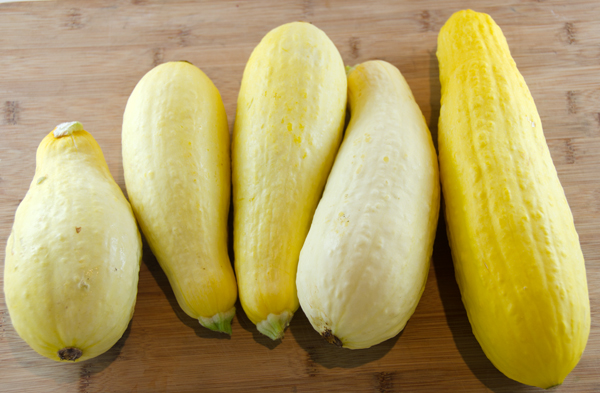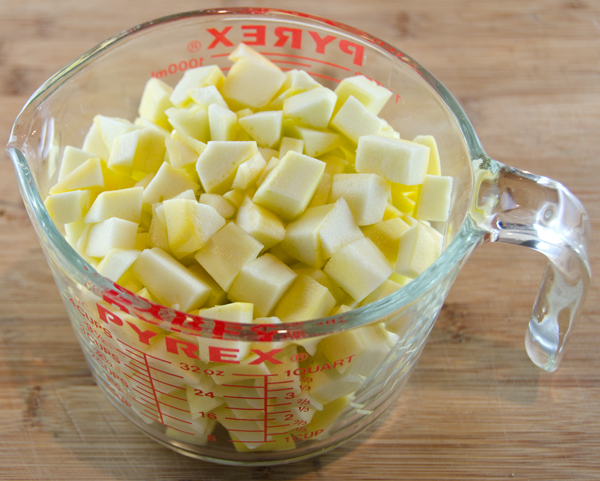Spring is finally in the air and asparagus is one of the first spring vegetables to emerge. When I was examining the asparagus in the supermarket, a fellow shopper asked me if it was local asparagus or not. The sign indicated that the asparagus was from Mexico. My fellow shopper told me she would wait a little longer for the local asparagus. Because of our exceptionally cold and snowy winter I am sure that local asparagus won’t be appearing in our farmers markets until late May and early June. I wanted to make asparagus soup for Easter so I decided to buy it anyway.
When purchasing asparagus, choose spears that are bright green, even purplish with firm, tight tips. Markets usually sell asparagus in one pound bundles. Pick the bunch up and examine for split or broken ends. The cut ends are fibrous, the plant’s reaction to when it is cut in the field. If the stem end is excessively woody or wrinkly, the asparagus is past its prime.
Fat, thin or in between, when it comes to asparagus you could say they were “born this way”. When we had an asparagus patch the spears varied from skinny ones to very plump ones. Fatter spears of asparagus weren’t left out in the field too long unlike that zucchini you grew that became as thick as a baseball bat. Thickness is a sign of the age of the crown which produces the asparagus stalks. Thinner asparagus originates from younger plants or from crowns that are planted closer together. Mature crowns and certain varieties produce thicker spears.
Thin asparagus is predominant in the off-season in this area and many view it as more desirable. I personally prefer a medium to slightly thicker stalk when the local farms are producing.The taste testers at Cooks Illustrated liked both thick and thin asparagus. They found the thicker spears to be more tender because the fibers are more concentrated in the thin spears. The trade-off? Thicker spears may need to be peeled.
The best way to store asparagus is to trim the cut ends slightly and stand them in a shallow container of water. Cover the container with a plastic bag and refrigerate for several days. The alternative (my personal favorite) is to wrap the stem ends with a damp paper towel and store in the produce bin of your refrigerator. To snap or to cut? I prefer to cut the ends of asparagus for a more uniform appearance.
Waste not, want not could be the subtitle of this recipe. Every part of the asparagus stalk is used from the ends to the tips. The “waste not” is the woody stems of the asparagus and the dark green tops of the leeks that are usually relegated to the compost bin in most recipes. For the “want not”, these usual discards are combined with celery and onions, herbs and water to make a flavorful vegetable stock. Then the rest of the celery, leeks and garlic are sautéed in butter. The tender stalks of the asparagus along with some potato are added next to give the soup more body before the vegetable stock is added. It was not called for in the original recipe, but I put the soup through a food mill to give it a smoother texture. The asparagus tips are blanched separately for a minute or two and added to the soup before serving as a final garnish. Cream is added to the soup as a final touch, you could use half and half or skip the dairy altogether. Served hot or cold, this soup is a delicious springtime treat.

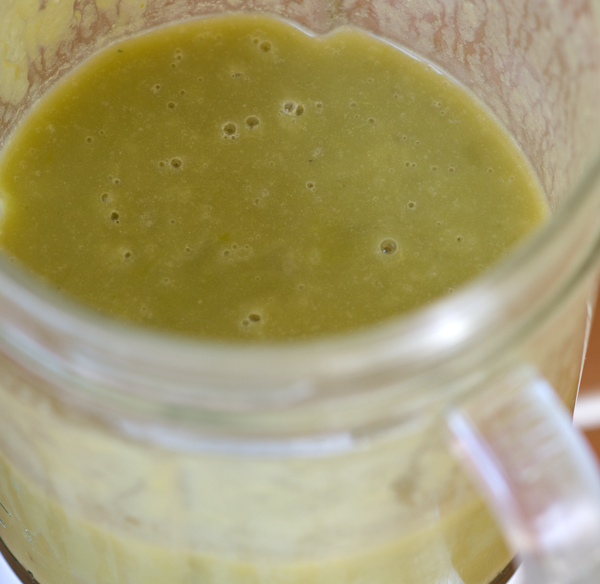

Creamy Asparagus Soup
From Fine Cooking magazine
Serves eight
Ingredients
- 2 lb asparagus
- 3 ½ T unsalted butter
- 1 c coarsely chopped celery ribs
- 2 c coarsely chopped yellow onion
- 1 large leek (white and green parts), halved lengthwise, thoroughly rinsed, and thinly sliced crosswise (keep dark green parts separate from light green and white parts
- 8 whole peppercorns
- 5 sprigs flat leaf parsley
- 2 sprigs thyme
- Kosher salt
- 2 medium cloves garlic, chopped
- ½ lb small red potatoes, peeled and cut into 1/2 inch dice (1 heaping cup)
- ¼ c heavy cream or half and half (optional)
- Freshly ground white pepper
Directions
- Snap off the tough ends of the asparagus, but don’t discard them. Cut about 1½ inches of the tips off the asparagus spears and cut the spears crosswise in thirds; set the spears and tips aside separately.
- Melt 1½ T of the butter in a 3 quart saucepan over medium low heat. Add the tough asparagus ends, half of the celery, the onion, and the dark green parts of the leek. Cook uncovered, stirring occasionally, until the vegetables look very soft, about thirty minutes. If the vegetable show any sign of browning, reduce the heat to low. Add 6 cups cold water and the peppercorns, parsley, thyme and a ½ t salt. Bring to a boil over high heat, reduce the heat to medium low, cover, and simmer for 30 minutes to make a flavorful vegetable stock.
- Meanwhile, bring a 2 quart pot of salted water to a boil over high heat. Add the asparagus tips and cook until just tender, 2 to 3 minutes. Drain in a colander, rinse with cold water to stop the cooking, and drain again. Set aside.
- In another 3 quart (or larger) saucepan, melt the remaining 2T butter over medium low heat. Add the white and light green sliced leek and the remaining celery and season with a with a generous pinch of salt. Cook, stirring occasionally, until the leeks look soft but not browned, 3 to 4 minutes. Add the garlic and cook for one minute more. Add the asparagus spears and the potato. Set a wire mesh strainer over the pot and pour the stock from the other pot; discarding the solids. Stir well and bring to a boil over high heat. Reduce the heat to medium low, cover and simmer until the potatoes and asparagus are very tender, about 20 minutes. Turn off the heat and let cool slightly.
- Purée the soup in a blender in two or three batches. If you want, put the soup through a food mill for the smoothest texture. Return the puréed soup to the soup pot.
- Add cream or half and half if desired, and stir well. Reheat the soup gently over medium low heat. Season to taste with more salt and a large pinch of white pepper. Ladle soup into bowls and scatter in the asparagus tips, distributed them evenly among the bowls.
